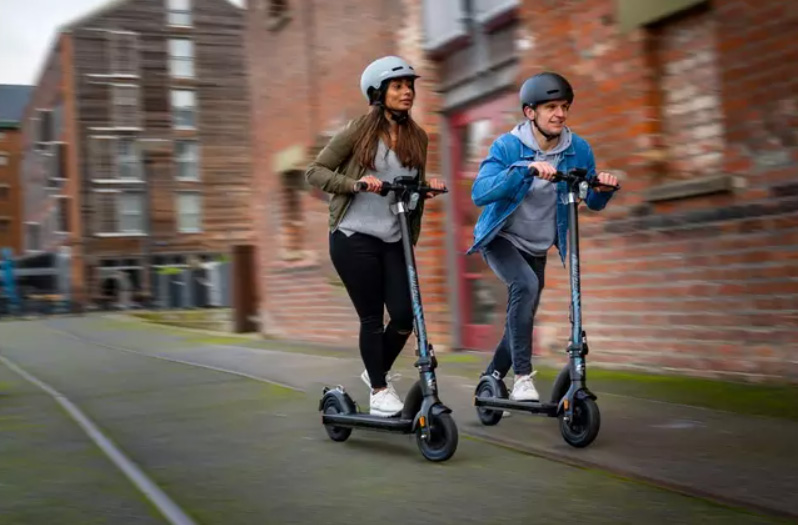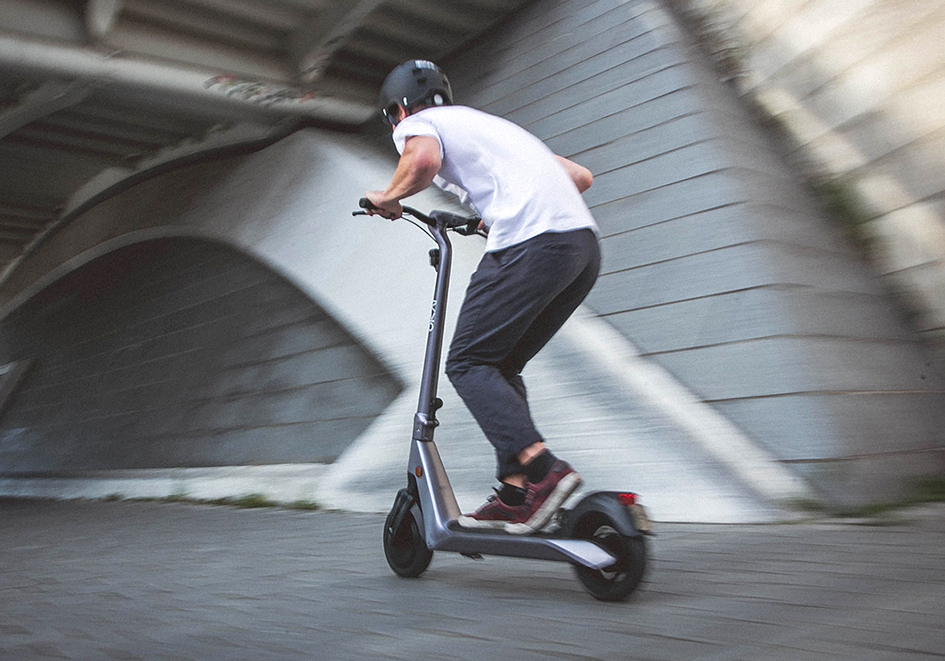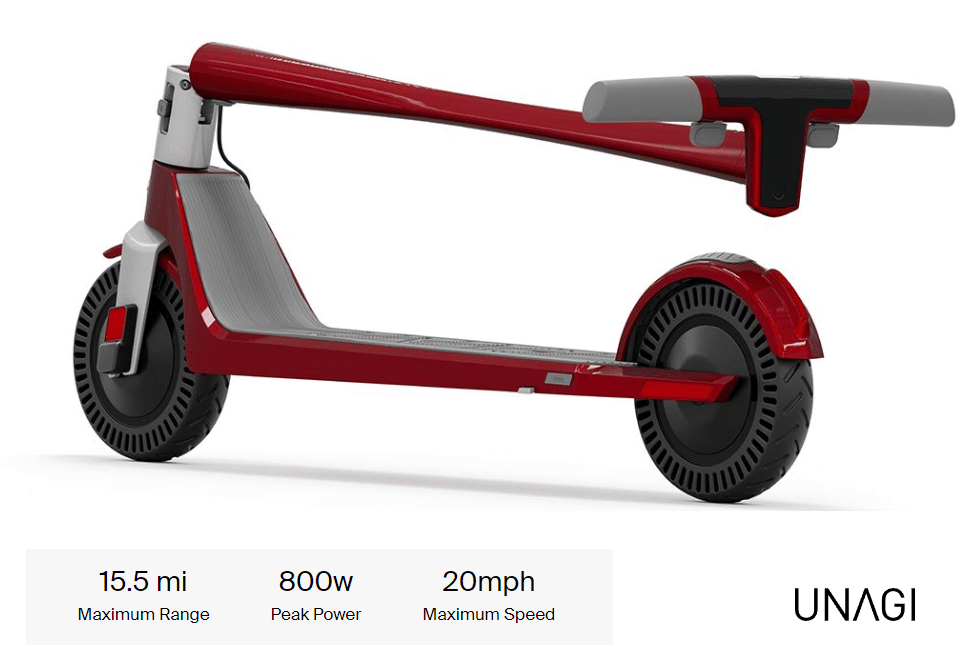Table of Contents
Helmets are vital to your safety during your travels.
Whether you are thinking of buying a new electric scooter and a new helmet or just want to replace your current helmet, it’s important to inform yourself about the importance of e-scooter helmets.
Helmets are vital to your safety during your travels. A good helmet can protect your head in the event of a collision, but with so many types of helmets available to buy, which is best for your needs? And how often should you replace them?
Here’s everything electric scooter riders should consider when purchasing this truly essential accessory.
Do I really need a helmet for riding an electric scooter?
You’ve probably seen people riding scooters without helmets, so maybe you’re wondering if you really need one. The answer is a resounding yes! For electric scooters, the most common type of injury is head trauma. Based on data, you’re also more likely to get injured in a fall than getting hit by a car or crashing into something. That means even if you’re riding in an area with no apparent danger, you can still hurt yourself just by falling.
Helmet-wearing lowers the risk of serious head injury by 70 per cent. That means if you wear a helmet, you are 70 per cent less likely to injure yourself.
Helmets are perfectly designed to protect your head from bad injuries; however, they do need to be replaced after a while. Experts agree that after a crash, you need to replace your bike helmet as soon as possible.
Like most equipment, helmets and their quality will degrade over time – meaning it is sensible to replace them to ensure that you continue to protect yourself adequately. But when is the right time to replace your helmet? Does being involved in a crash or incident change the helmet? Should I look for a newer model if it hasn’t been used for numerous years?

How long does a helmet last?
The answer to this question is dependent on the quality of the helmet you purchased, as different helmets age in various ways, which is down to their design, quality, how often they are used and how well they are maintained.
A helmet should be replaced every five years.
However, this is only if it hasn’t been involved in a crash, received impact, and is kept in good condition. For example, leaving your helmet outside in bad weather conditions could degrade much quicker. The outer shell and EPS foam can wear out.
What if I haven’t used my helmet in years?
Helmets that haven’t been worn or used in years will still most likely need to be replaced, even if the helmet was only used for a few months or less. In this case, it is necessary to replace the helmet, as environmental factors will eventually degrade it. These include fluctuations in temperature, sun’s rays, light and humidity, which diminish the helmet’s integrity over time. Even the highest quality foam constructions will still fall victim to these factors and inevitably degrade from not being used.
The takeaways from this are that if you discover a helmet after years of not using it, your safest option is to buy a new one.
What if my helmet has been involved in a crash?
If you have experienced an accident whilst wearing a helmet, then you should consider replacing it.
The damage to a helmet is not always visible, which means that after a collision, any wear and tear may seem harmless or practically non-existent.
This, however, is a misconception, as helmets are designed to absorb and disperse energy; this means that impact from an accident is consumed solely by the helmet. This is great, as it means that the helmet has fulfilled its primary function, which is to minimise the impact to your head but is not necessarily a similar story for the helmet. Also, if you have been in an accident, your helmet probably sustained prolonged pressure, which will weaken it.
In this instance, we strongly advise replacing your helmet, especially as slight damage can render the helmet practically useless. Should the unfortunate event arise where another accident occurs, you may not walk away completely unscathed should you decide to use the damaged helmet.
What if my helmet has been impacted?
Dropping your helmet can happen, and experts who design these accessories expect/prepare for this to occur.
During the testing phase, they take into account the impact a helmet may succumb to in the real world, so they are designed to be resilient. As long as dropping the helmet does not become a regular occurrence, it should be fine to continue using – even if it gains a few superficial scratches.
In the event of even the worst-case scenario happening, where the helmet hits a hard surface or stone floor, it is still unlikely that there would be enough energy present to cause fatal damage to the helmet.
Key elements to consider when buying a helmet
You should consider certain elements when looking for a helmet; is it safe enough? Does it fit properly? Is it the right type for the activities I’m taking part in? You should make sure you tick the following boxes.
Safety rating
The most important element to consider when buying a helmet for cycling or scooting is the safety rating.
Specifically, keep an eye out for helmets that meet – or exceed – Europe’s EN 1078 helmet safety standard. The European standard assesses various elements of the helmet, including construction, shock absorption, the field of vision, retention system qualities, and even the chin strap’s quality to ensure that it’ll provide adequate support in the event of a collision.
Ventilation
Ventilation is another key aspect of any decent helmet – you’ll want to avoid a sweaty head during long rides. The idea is that the holes allow heat to escape from the back of the lid while funnelling cool air through the front. While most helmets offer some form of ventilation, from small circular holes to larger rectangular openings, the design will vary from helmet to helmet.
It should go without saying that helmets with more air vents are generally lighter and cooler, but this may also impact the level of protection on offer, so try to find a nice balance between keeping cool and being protected.
Weight
A lightweight helmet will help you to gain extra speed – the issue is, generally speaking, you’ll be paying more for a lightweight helmet than its heavier counterparts.
It’s down to personal preference, of course, and if you’re planning on wearing it when riding an electric scooter, then you probably don’t need speed, so instead, opt for a secure and protective helmet than a lightweight one.
Padding
A key element to the overall comfort of any helmet is the padding that lines the inside of the lid. This helps keep the helmet snug on your head without causing sores or irritation over long periods of use and also has the additional benefit of mopping up sweat and hair oils to keep you feeling fresh.
Padding is often removable, and some brands even provide extra padding in the box to achieve the best fit for your head. The key is finding something with enough padding to keep you comfortable and protected.
Fit
A good helmet should fit snugly and comfortably onto your head to provide the best possible coverage in the event of a collision. You must take the time to correctly measure your head and find the right size as a helmet that’s too big or too small won’t actually protect your head in the way it should.

Key takeaways
If you aren’t sure about the safety of your helmet, or you think that it might be too old, then you should instead be on the safe side and replace it. Remember, your helmet is made to dissipate energy from an impact; therefore, it probably needs to be replaced if it has been in an accident.
There is also no point in wearing an old helmet that won’t protect you if you fall. If someone gives you a helmet, find out how old it is and if it has been in any accidents. You can find good quality helmets at affordable prices, so you don’t have to compromise safety while riding. Remember, safety is paramount.
Now all you have to do is make sure you have the right helmet and enjoy riding!

Nely Hayes
BIO:
Nely is an adrenaline junkie and one of her life goals is to sky dive, but until that day she gets her kicks from testing fast electric scooters. Part time scooter fanatic & part time SEO analyst. Nely’s favourite scooter is the Dualtron X.

 Free Shipping
Free Shipping Service included
Service included Theft Insurance included
Theft Insurance included No BS
No BS